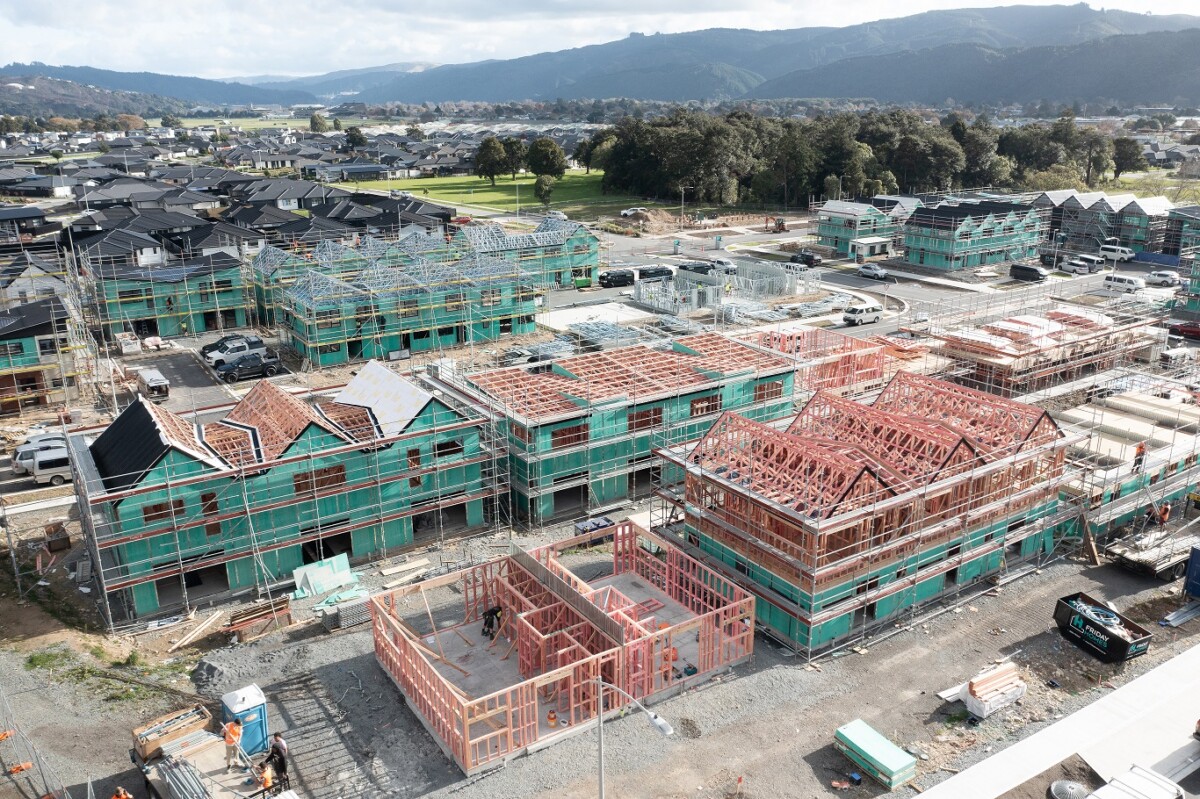Inter-tenancy walls in MDH
20 Jan 2023, Learn, Prove Your Know How, Technical

Townhouses and apartment buildings are here to stay, but architect and Senior Lecturer at Victoria University, Guy Marriage, says we need to design and build them to far higher standards than we do now. In part one of a new series looking at designing and building medium-density housing, we look at inter-tenancy walls
Medium-density housing (MDH) has one major design difference from stand-alone housing – the need for inter-tenancy walls (ITWs). Never think of these as just another wall because they have special requirements.
What is an inter-tenancy wall?
The ITW between one unit and another is a legal boundary. It is required to have a fire resistance rating and attain a satisfactory level of acoustic separation. Correct construction of the wall is not only a legal requirement – it influences the comfort of future occupants.
Frustratingly, the New Zealand Building Code says little about the needs of the ITW. By comparison, in the UK, there is a separate Act of Parliament regarding the party wall, where the party wall has its own rights. In our legislation, the situation is at best vague and at worst largely ignored.
We are so unused to the concept of this type of wall that we don’t even have an official name, so I’ve selected the three-letter acronym of ITW. Others may refer to it as a party wall or a unit title wall, but the Unit Title Act is vague about the legal standing of the wall – being unclear about where exactly the legal boundary sits although, obviously, it should sit bang in the middle of the wall.
In the UK, many millions live in terraced housing with party walls constructed from solid brick, and the legal boundary lies in the middle of the brick. Sometimes, they will have two separate walls of brick, and the legal boundary lies in the void between the walls.
In New Zealand, because of our seismic situation, we do not build ITW of brick. Instead, we have a large array of possibilities for construction of the ITW – generally centred around the concept of twin walls.
Construction and material options
In the book Medium, we cover some of the possible construction options for ITW, all of which are slightly different.
Some have a central fire-rated wall element with two self-supported timber walls, one each side (see Figure 1). This central element could be made from a special plasterboard barrier or perhaps an interlocking steel and concrete panel system or even a poured in situ concrete central divider.
Other systems may be made with lightweight concrete blocks fixed together. Some architects may still prefer to design the wall from precast concrete slabs or to create the wall from scratch via traditional concrete block construction.
The one construction system that is no longer used is the traditional single skin of timber construction with plasterboard either side, as that simply will not meet the acoustic, fire or legal performance requirements.
Legal boundary with joint responsibility
Whatever construction system is selected, it must run horizontally from front to back, usually in a continuous straight line. This is the legal boundary so any alterations will need to be on the surveyor’s final boundary plans or, in the case of multi-unit apartment buildings, on the unit title plan.
This legal boundary also extends straight up from the foundations to the top of the roof. The exact position of the legal boundary sometimes gets a little trickier at the front or back of the medium density housing unit, especially if one unit sits proud of its neighbour or if the dividing wall projects out to form a protruding lip.
Even if the development is detailed so that one unit appears to have the protruding lip and the other unit is recessed behind, the ITW is still in joint ownership and both units have a legal responsibility for that wall. Further, the waterproofing for that protruding lip must be legally supported by each side.
Design wall to remain standing
As designers and builders construct the wall, they need to remember that, if one unit was to be removed in future years, the remaining portion of the wall needs to remain standing despite the lack of support. For example, perhaps one unit has to be demolished after suffering a fire.
That’s why ITW systems with a central barrier of plasterboard, autoclaved aerated concrete panels or other interlocking systems still need to have connection and support from both sides of the wall.
Treat entire assembly as a legal entity
Having designed and built your ITW, you now need to make sure that you don’t mess it up. What is the status of the wall? Is it just the middle part that is the legal boundary? Does one side have more rights than the other side? Is it the whole assembly that is now the ITW?
Again, the Building Code, the Unit Titles Act and surveyors’ opinions are all a bit vague on this. Until we have a law change over this aspect, it will remain a bit confused, but it is probably best to err on the side of caution and treat the entire assembly as a legal entity.
Avoid penetrations
That means trying to avoid poking holes in it and stringing wires and pipes through it. Yes, you do this for other walls – and legally there is nothing to stop us – but remember that this is no ordinary wall. It is an ITW. Every penetration you make lessens the acoustic and fire-rating properties of that wall as well as interfering with a wall system that one day will probably have its own legal rights and responsibilities.
I encourage you to respect the legal status of the ITW and make sure that you keep the wiring and plumbing completely within each separate unit. The usual rules for a stand-alone house do not apply here.
Aim for better acoustic rating
The enjoyment of each owner in their own space either side of the wall depends on achieving at least the minimum fire resistance rating required of the wall and the minimum acoustic rating of the sound transmission class (STC) between the two units.
Remember, the Building Code sets a low bar when it comes to STC. Instead of aiming to have a wall that just meets STC 55 in theory and probably only
50 in practice, your ITW should be aiming to reach 65 or more in theory and should have the confidence to achieve that in practice as well.
After all, if one person living in one unit enjoys Debussy and their neighbour likes drum and bass, their mutual enjoyment relies on you having really good separation – not by good luck or chance but by good design and great construction.
Article by Guy Marriage, FNZIA, Senior Lecturer, School of Architecture, Victoria University of Wellington, and Architect, First Light Studio. This article was first published in Issue 192 of BRANZ Build Magazine. Figures supplied by BRANZ
Register to earn LBP Points Sign in
2 Comments
Leave a Reply
You must be logged in to post a comment.




good one
nice